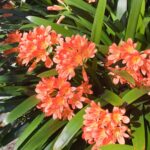‘Eryldene’ was the home of the late Professor E. G. (Eben Gowrie) Waterhouse (1881-1977), who was a world authority on camellias. His house, designed by leading architect of the late 19th and early 20th centuries, William Hardy Wilson, was built in 1913.
Today the house and Prof. Waterhouse’s magnificent garden of camellias and azaleas have been preserved and are open to the public. Eryldene and its buildings are the only surviving unaltered examples of the work of Hardy Wilson.
The house, which is designed in a classic style, fuses elements of classic Greek architecture with the simple lines of Georgian style. Other buildings in the garden combine classic Greek features with Chinese-inspired elements. For example the pavilion beside the grass tennis court called The Tea House (built in 1927) has the look of a Chinese pagoda (particularly in its roof and colouring) but also sports Greek Doric inspired columns. Motifs decorating the building are of bats and peaches, elephants and dragons. Elsewhere a Moongate is found, a traditional element of Chinese gardens.
A feature of the garden both now and in the Professor’s time is the way plants are kept trimmed and shaped. Azaleas for example have been trimmed throughout the garden into nicely shaped bushes. The pruning done at the right time (best time to prune is in January or February) also increases the flowers on the plant. One historically interesting camellia is a white flowering one, Aspasia ‘Macarthur’, which was produced at the Macarthur Farm. This camellia was the parent of many famous camellias later bred in Australia such as ‘Lady Lock’.
There is also a range of Australian native plants amongst the formal plantings or camellias and azaleas. Some of the native plants in the garden include: Riberry (Syzygium luehmannii) an Australian native lilly pilly and a Sydney Red Gum (Angophora costata). Another aspect of the garden which can be adapted to any garden is the use of portals in the structure creating interest in the different vistas in the garden. The stone paths are well constructed with only a slight undulation allowing visitors to walk through the garden and admire it rather than watching their steps.
Eryldene is a wonderful garden to visit and somewhere to come and learn some ideas for your own backyard. It is administered by the Eryldene Trust, a public company formed in 1979. It has a board of governors comprising of nominees of Ku-ring-gai Council, the Australian Camellia Research Society and the International Camellia Society. Funds are raised to maintain the house and garden through the Eryldene Foundation.
Further information
Eryldene is located at 17 McIntosh Street, Gordon, NSW, 2072. Phone: (02) 9498 2271. Fax: (02) 9499 2636. Eryldene will be open to the public on Saturday 1st August 1998 from 10am to 4pm and Sunday 2nd 1998 from 10am to 1pm. Admission to the house and garden costs $5 adults, $3 – concession, $10 – family and $1 – children 6-15 years.
Further reading
To find out more about Eryldene and its design consult The Grecian Pagoda and the Architecture of Eryldene by Zeny Edwards (1995). ISBN 0 646 25568 1.



